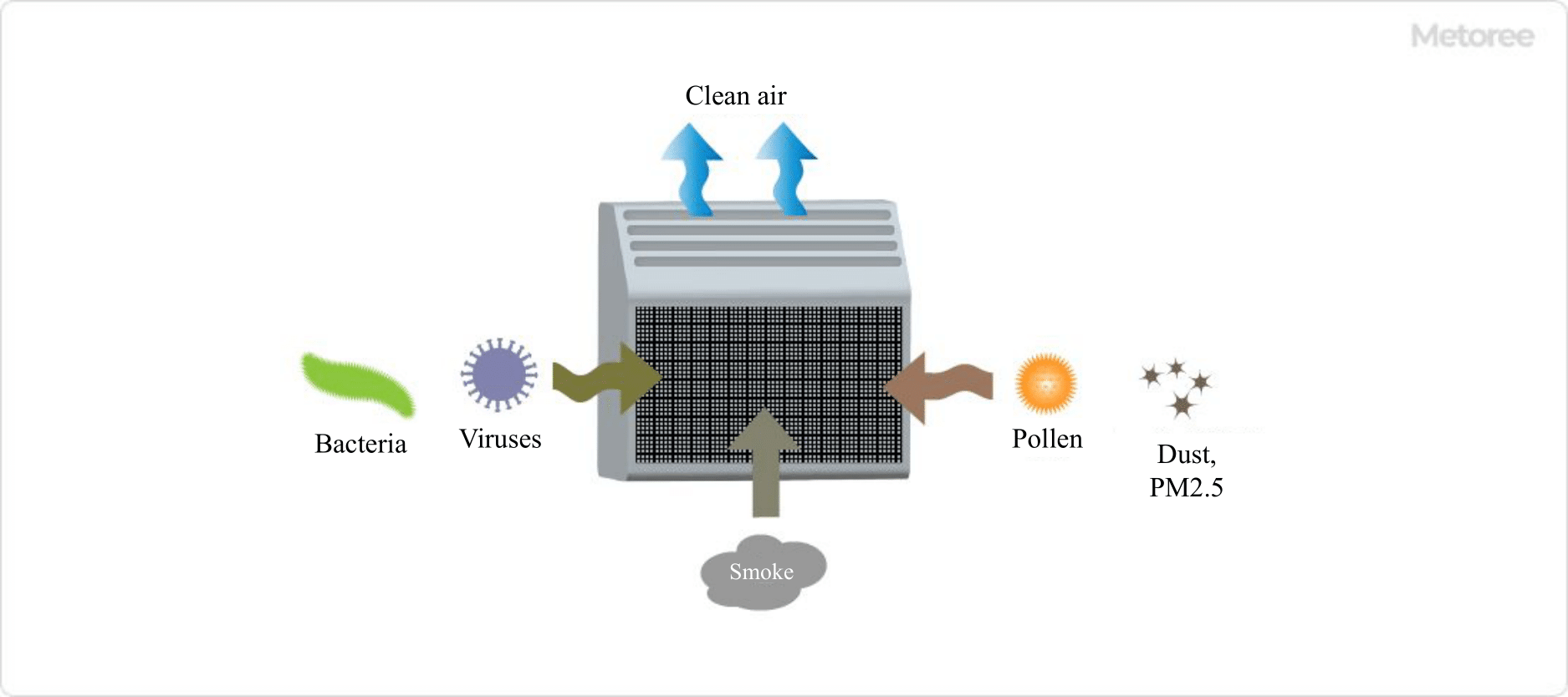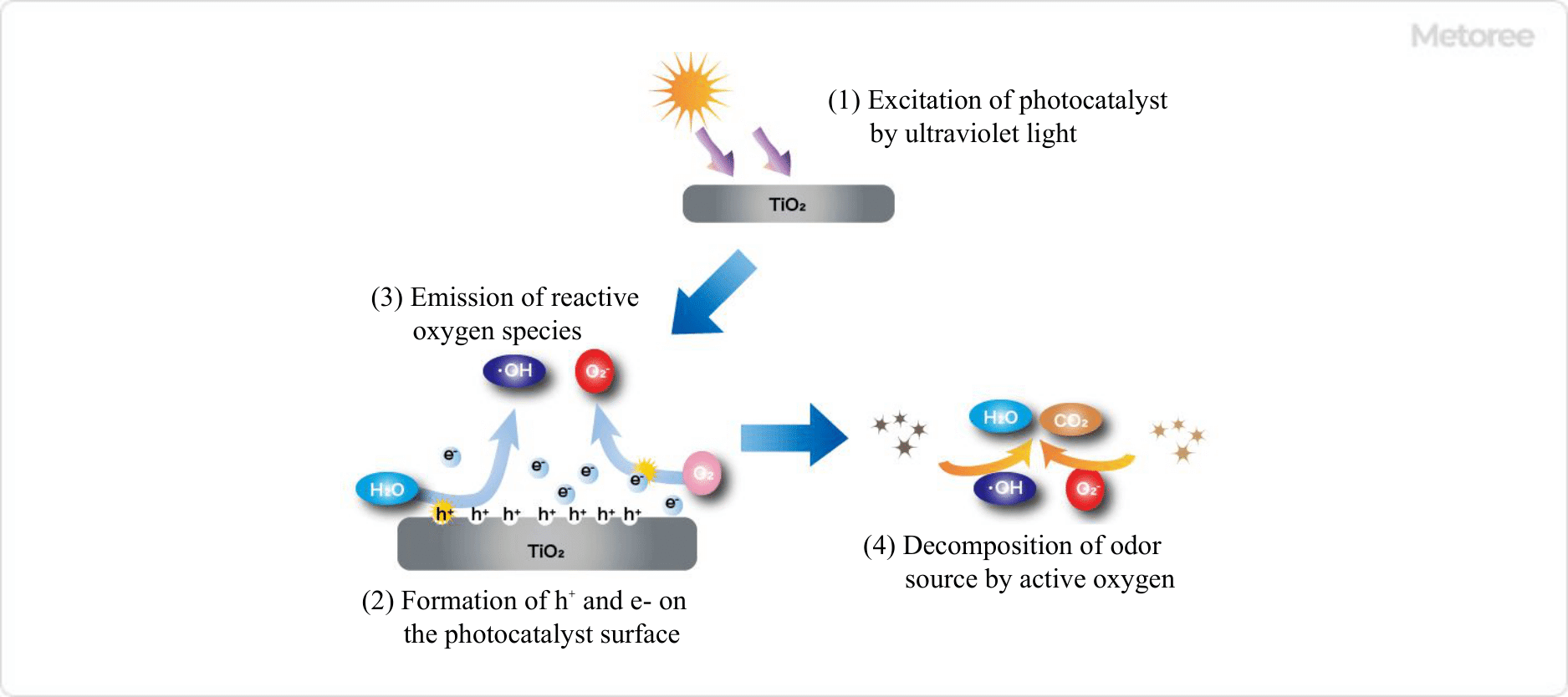What Is a Photocatalytic Deodorization Device?

Figure 1. Photocatalytic deodorization system
A photocatalytic deodorization device is a device that deodorizes the air by oxidizing and decomposing malodorous and harmful substances through the strong oxidizing power of photocatalysts supported on the filter. Photocatalyst is effective when light strikes its surface, oxidizing and decomposing harmful substances and odor-causing substances.
As a result, it exerts deodorizing and antibacterial effects and purifies the air. Although it has an oxidizing power stronger than ozone, it is safe and does not cause harm to the human body. This technology originated in Japan.
Photocatalysts can be used over and over again because they are voluntarily renewable by light. It is also characterized by its ability to maintain its effectiveness with simple maintenance and the fact that it does not need to be disposed of.
Uses of Photocatalytic Deodorization Devices
Photocatalytic deodorization devices are used to purify the air in the surrounding environment by installing them in places where bad odors are a problem. They can remove pollen, mold, tobacco, bacteria, and even viruses such as new strains of influenza.
They are often employed on the merit that they are safer than ozone and other substances. Therefore, it is mainly used in places where safety and hygiene are important. It is also used in university and corporate laboratories where animals and other animals are kept, food factories and kitchens, nursing homes, and hospitals.
It is also used in places where care is taken not to damage brands and images due to bad odors (large commercial facilities with many people coming and going, hotels and other lodging facilities). Because of its high oxidizing power and very strong deodorizing action, it is also used in places with very strong odors, such as sewage treatment facilities and sludge treatment facilities.
Principle of Photocatalytic Deodorization Devices

Figure 2. Principle of photocatalysis
Photocatalytic deodorization devices utilize the principles of photocatalysis and hydrodynamics. The principle of photocatalytic deodorization is an oxidative decomposition reaction.
- When titanium dioxide (TiO2) is exposed to light (ultraviolet light), electrons in the valence band are excited, producing e- (electrons) and h+ (holes).
- Oxygen and water in the air are adsorbed on the titanium dioxide surface, causing a redox reaction with h+ and e-, resulting in the generation of reactive oxygen species such as ・OH (hydroxyl radical) and O2- (superoxide anion).
- The generated reactive oxygen species cause a redox reaction with organic compounds adsorbed on the titanium dioxide surface. Malodorous substances and bacteria are decomposed to produce carbon dioxide and water.
Compared to the oxidation potential of ozone, which is 2.07, the oxidation potential of titanium oxide, a component of photocatalyst, is 3.20. This indicates that the oxidation potential of photocatalyst is stronger than that of ozone.
Some products use the principle of hydrodynamics to devise an internal structure to make the pressure distribution more uniform, thus reducing the size of the device. Photocatalytic filters are constructed with two or three layers to increase the area where air comes into contact with the photocatalyst, thereby improving efficiency.
Types of Photocatalytic Deodorization Devices

Figure 3. Types of photocatalytic deodorizers
The structure of the product basically consists of a photocatalytic filter and a UV lamp. Filters carrying photocatalyst (titanium dioxide) include plastic, ceramic (alumina), and aluminum, and the number of filters varies depending on the product. Plastic is lightweight and resistant to breakage, ceramic is a thermally and chemically stable material, and aluminum is high-strength and lightweight, respectively.
They also come in a variety of shapes, such as directly above the fan, horizontally mounted, and ceiling-suspended types, and in sizes ranging from small enough to be installed indoors to large enough for outdoor use. Photocatalysts are self-regenerating by light, so maintenance of the photocatalyst itself is low maintenance. However, the UV lamps need to be replaced periodically.
When used for kitchen exhaust containing oily smoke, it is effective to select a product with a cyclone scrubber or grease filter as a pretreatment.